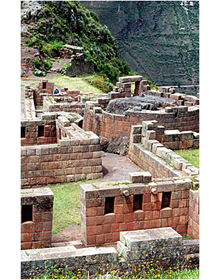resources
Museum Collections - Ancient Peru - Inka

The conquering Inkas rose to power in the Cusco area of southern Peru in the 1400s and ruled until the Spanish arrived and conquered them in 1532. They spread their empire called "Tawantinsuyu" or "Land of the Four Quarters" from beyond Quito, Ecuador, to below Santiago de Chile, a span of 5500 km. They developed one of the most recognizable art styles in history and were known for many remarkable achievements. The Inkas built a network of roads some 40,000km long. They exercised state control based on tribute, which included labour to build roads, the weaving of textiles with wool provided by the state, and the production of food on state fields. Inka weaving reached a technical level unsurpassed in pre-Industrial times, with thread counts of several hundred threads per centimetre. The Inkas believed the mountains, springs, and lakes were sacred, and their architecture reflected this relationship with the landscape. They built cities and ceremonial centres (such as the ruins of Pisac, left) into mountain peaks and revered sculpted, natural rock outcrops.

